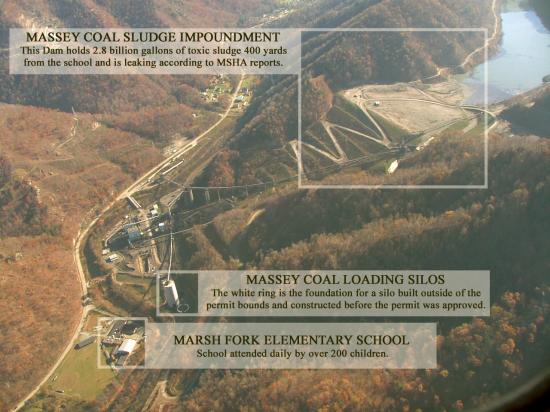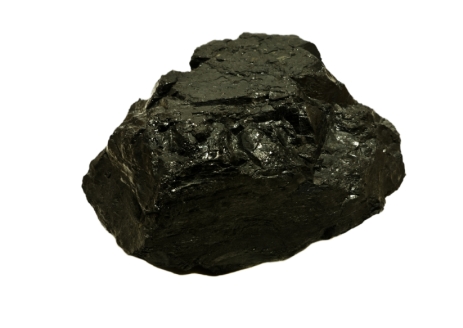EVEN MORE UP-TO-DATE UPDATE (3/22): The New York Times profiles Calera, the Vinod Khosla-backed company that hopes to embed carbon dioxide in cement. Dave tells the full story below.
UPDATE: Vinod Khosla sent in a response — see the bottom of the post.
——
Tom Friedman had a column over the weekend lauding a couple of American clean-energy innovators and entrepreneurs. Like almost all his green-focused columns, it’s good stuff. However! In the course of accomplishing his worthwhile objective, Friedman and one of his subjects both say something I just can’t let pass without comment. I hate to make a big kvetch out of what is otherwise a good column, but this particular error really needs to be called out.
Discussing Khosla’s big new investment, in a company that can trap carbon into concrete and other useful products, Friedman says:
If this can scale, it would eliminate the need for expensive carbon-sequestration facilities planned to be built alongside coal-fired power plants — and it might actually make the heretofore specious notion of “clean coal” a possibility.
Khosla himself goes even farther overboard:
“If this works,” said Khosla, “coal-fired power would become more than 100 percent clean. Not only would it not emit any CO2, but by producing clean water and cement as a byproduct it would also be taking all of the CO2 that goes into making those products out of the atmosphere.”
No, no, a thousand times no. Even if a coal-fired power plant sequestered 100 percent of its carbon pollution, it would not be “clean.” Even if, as Khosla says, it sequestered all its carbon pollution and helped abate carbon pollution from other sources, it still wouldn’t be “clean.”
 Marsh Fork Elementary school, just downhill from a whole bunch of clean.Getting coal out of the ground is horrifically destructive to both ecosystems and human communities. Washing coal to prepare it for transport leaves behind multi-million gallon pools of toxic slurry, which regularly fail and flood nearby communities. Transporting coal is a carbon-intensive and destructive undertaking in itself. In Appalachia, gigantic trucks careen downhill on narrow roads carrying enormous coal loads trailing toxic dust. Coal trains also lock up most of the country’s rail infrastructure, which could otherwise be used for low-carbon freight shipping.
Marsh Fork Elementary school, just downhill from a whole bunch of clean.Getting coal out of the ground is horrifically destructive to both ecosystems and human communities. Washing coal to prepare it for transport leaves behind multi-million gallon pools of toxic slurry, which regularly fail and flood nearby communities. Transporting coal is a carbon-intensive and destructive undertaking in itself. In Appalachia, gigantic trucks careen downhill on narrow roads carrying enormous coal loads trailing toxic dust. Coal trains also lock up most of the country’s rail infrastructure, which could otherwise be used for low-carbon freight shipping.
Burning coal is also horrific. It leaves behind enormous quantities of heavy metal-laden coal ash, often in uncovered impoundments, from which ash drifts onto local communities. (Some coal ash is used in concrete too, but that doesn’t make it clean either.) In fact, efforts in recent decades to scrub air pollutants out of smokestacks in response to Clean Air Act requirements have led to more coal ash, as pollutants are effectively transferred from the air to the ash, where they are far less strictly regulated.
Into the air it releases not only CO2 but sulfur dioxide, nitrogen oxide, volatile organic compounds, mercury, arsenic, lead, cadmium, and smog-forming particulates. According to a 2009 report from the National Research Council, coal’s air pollution-related health impacts alone represent about $62 billion a year in “hidden costs.” To my knowledge, no one has yet added that $62 billion to the costs of coal-related water pollution (see NYT’s devastating Toxic Waters series), the cost of cleaning up after coal slurry floods, the cost of ceding rail infrastructure, the impoverishment of Appalachian communities, and the loss of some of America’s oldest, most biodiverse forests. Obviously it’s difficult to place a precise monetary value on some of that damage, but suffice to say, the sum total is enormous, if almost entirely unreflected in the market price of coal power.
All that sickness, all that ecological damage, all those social costs would remain the same at Vinod Khosla’s “more than 100 percent clean” coal plant. Indeed, those costs would be larger, since the energy required to sequester carbon means more coal must be burned for the same amount of useful power from a “clean coal” plant. If Khosla thinks we “have to” continue burning coal, fine — that’s the conventional wisdom — but to call it clean is an insult to, among others, the Appalachian families whose lives we sacrifice for our cheap power. I doubt he’d say that to their faces.
That Friedman and Khosla think carbon-free coal is “clean” is a function of what Alex Steffen calls “carbon blindness,” that is, a focus on climate change so narrow that it justifies anything that reduces carbon emissions. In my debate with Sasha Mackler, I put it this way:
Another way of viewing climate change, however, is in the context of a whole suite of biophysical limitations against which humanity is colliding. A recent paper in Nature identifies 10 such systems and claims we’ve passed the danger threshold on three of them and are rapidly approaching it on several others. (I discuss this paper in greater depth here.)
Viewed in this light, climate change is less an energy problem than a symptom of a larger problem, which could be characterized (if it’s not too dramatic) as existential. The question before us is not simply how to make energy less CO2-intensive. It is, how many of us can Earth comfortably accommodate? How and where should we live? How can we change our manufacturing, transportation, energy, political, and cultural systems to bring ourselves into a sustainable relationship with the only planet we’ve got? Heady stuff, to be sure, but a more honest assessment of our situation.
Now, what’s all that got to do with “clean coal?” Just this: When we evaluate a possible solution to climate change, we should judge it not just narrowly on its ability to prevent CO2 emissions, but more broadly–does it constitute a step toward a more sustainable relationship between human beings and the planet? If a solution is simply a patch that papers over broader problems, well … we don’t have much time left for those.
See also: my debate on “clean coal” with coal flack Joe Lucas.
——
Vinod Khosla responds:
Let me offer some clarifications. The article should more accurately say that coal with Calera is cleaner than solar and wind on lifecycle carbon emissions. Incidentally, we do also trap most of the SOX, mercury, and heavy metals. We do not trap the NOX, but there are other technologies and regulations to limit those. In fact, Dave Hawkins of the NRDC said to me, “If you clean up the flue gases, there are other ways to handle mining.”
Incidentally, the same technology also captures carbon emissions from natural gas power plants. So natural gas can be as clean or cleaner than solar and wind too on lifecycle carbon. We have observed 80-90% carbon capture in natural gas power plants with larger lifecycle reductions, at 8%-type parasite loads (we call it auxiliary load because we are using the power to produce a product).
I am not a fan of mountaintop removal mining and do agree with you that it is a problem. It should be eliminated. There are other sources of coal that are more acceptable. More importantly, the reality is that coal is going to be around and the cheapest source of power so countries will continue to use it. The pragmatic question is, can we clean it up? We do reduce the level of mining by eliminating or reducing the mining for feedstocks for cement and aggregates. We also reduce the fly ash problem by using it fly ash from many types of coal as a feedstock in our process. As a too-good-to-be-true punchline, we can produce fresh water as a by-product at dramatically lower energy cost than desalination. We can be “zero discharge.”
Also, solar and wind are important but will not scale enough to solve the problem. (We have just invested in two new wind companies, one solar company, and a renewables storage company, in addition to past investments in solar and other renewables. We also have a large number of efficiency investments in almost every area.) Nuclear is not competitive in cost without subsidies and has other issues, including very long response times to capacity demand, and radioactive waste.



